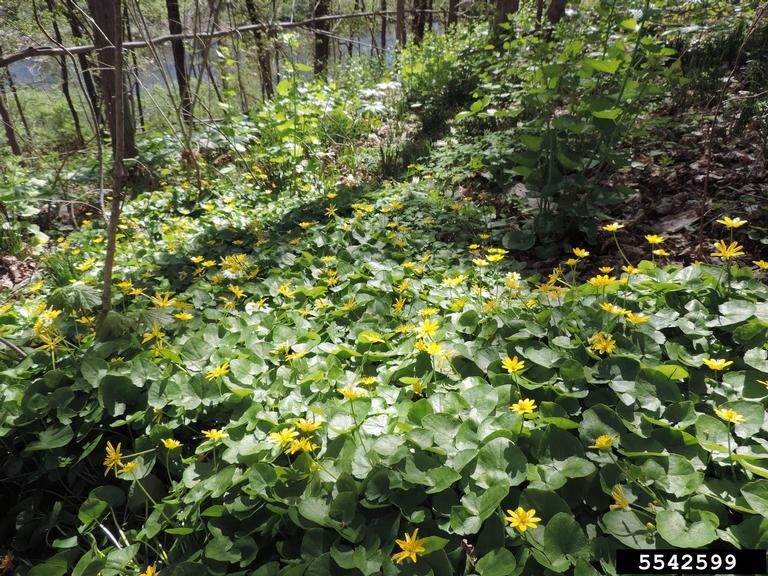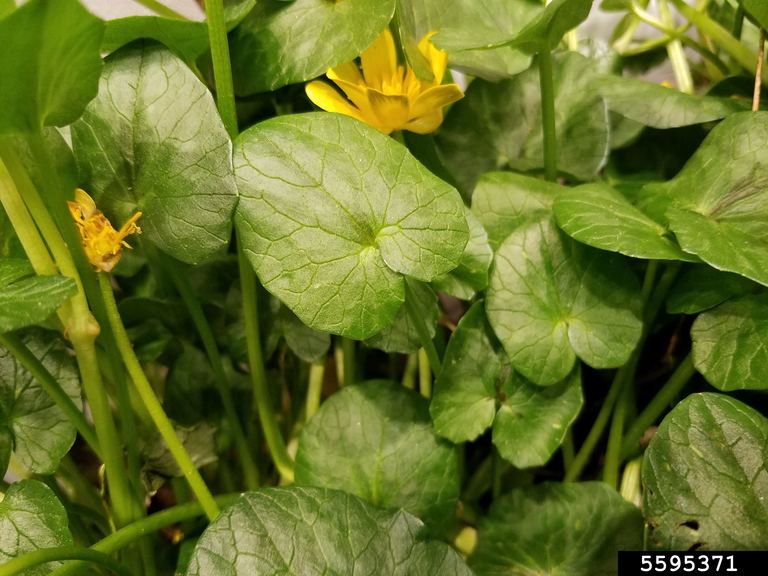Lesser celandine: An attractive spring weed that spreads with a vengeance
Also known as fig buttercup, lesser celandine forms dense mats that outcompete shady turf and spring ephemerals.

Last year, we had a small patch of weeds in our lawn that we did not address. In the subsequent year, that patch has grown into a dense mat of the perennial weed lesser celandine (Ficaria verna, formerly Ranucuculus ficaria). Lesser celandine, also commonly known as fig buttercup, is an attractive plant that was introduced from Europe as an ornamental. Its ability to form thick mats that choke out competitors makes it an unwelcome addition to our landscape. It can outcompete turf in moist, shaded areas and can exclude spring ephemerals from the forest floor.

In late winter, the small (0.5–1 inch), green, kidney- or heart-shaped leaves of lesser celandine grow in a rosette (similar to a dandelion), and during March and April bright yellow, seven- to 12-petal flowers appear. When plants are removed from the soil, tubers are visible among the root mass. Lesser celandine thrives in wet conditions and is frequently found near water sources. This can lead to confusion with another member of the Ranunculus family, the native wetland plant yellow marsh marigold (Caltha palustris), which blooms in early spring. The flowers of marsh marigold feature yellow, petal-like sepals that may be fewer in number (five to nine) than the yellow petals (seven to 12) of lesser celandine. Marsh marigold is reliably distinguished by its lack of tubers.

Because lesser celandine emerges late in the winter and goes dormant over summer, there is a relatively short window for control. Since plants can grow from tubers and small bulblets left behind in the soil, effectively removing an infestation by pulling or digging requires diligence and persistence. Post-emergence herbicides are most effective during early spring while plants are actively growing.

Since lesser celandine is often found near streams, ponds and marshes, a permit may be required prior to making an herbicide application; contact the Michigan Department of Environment, Great Lakes and Energy (EGLE) Aquatic Nuisance Control Program Staff at 517-284-5593 for more information. Also, a list of approved aquatic herbicides needs to be consulted on the Michigan EGLE website. Always use an herbicide labeled for use with the target plant and follow label instructions for user safety and environmental protection

You can access lawn and garden tip sheets, articles and newsletters from Michigan State University Extension at our website Gardening in Michigan. For direct assistance, upload questions and pictures through our Ask an Expert resource or call the toll-free Lawn and Garden Hotline at 1-888-678-3464.
More information
- Ficaria verna, MICHIGAN FLORA ONLINE. A. A. Reznicek, E. G. Voss, & B. S. Walters. February 2011. University of Michigan. Web. May 7, 2020.
- Lesser celandine (Ficaria verna), Midwest Invasive Species Information Network
- Plant Profile for Ranunculus ficaris, fig buttercup, United States Department of Agriculture, Natural Resources Conservation Service
- Weed Risk Assessment for Ficaria verna(Ranunculaceae) – Fig buttercups, United States Department of Agriculture, Animal and Plant Health Inspection Service



 Print
Print Email
Email